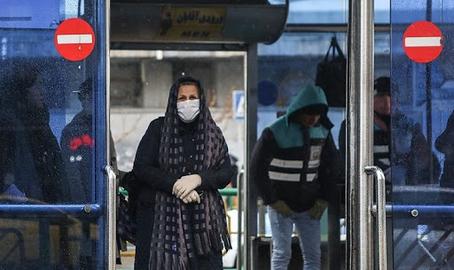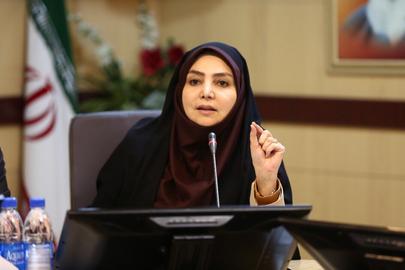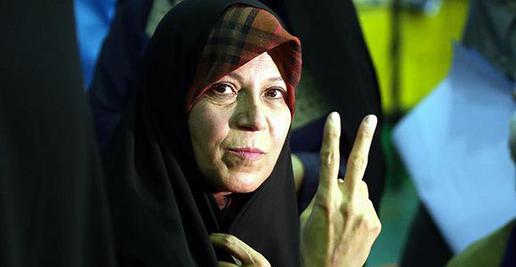On Saturday, July 18, as Iran re-imposed restrictions in the capital and elsewhere in the country, President Rouhani conceded that some 25 million Iranians may have contracted coronavirus. He quoted from a Ministry of Health report, the same ministry that has consistently distorted data about coronavirus infections and fatalities in the country, and which has also classified patients who have not had coronavirus-specific tests but show symptoms of Covid-19 as suffering from “acute pulmonary syndrome.”
Rouhani added: “There is the possibility that between 30 and 35 million more people will be at risk,” although he did not elaborate. He said since the outbreak, more than 200,000 people in Iran have been hospitalized and that it is possible that a few million more could be hospitalized in the coming year.
According to Rouhani, the coronavirus epidemic in Iran most likely started in Qom and Gilan provinces. People who had traveled from Wuhan, China initially contracted the virus and it was likely spread by students and tourists. He said the country had moved out of the first wave of coronavirus and, echoing deputy health minister Ghasem Jan-Babaei, blamed the second wave of the epidemic on the Iranian public and its failure to follow guidelines. In particular, he said people’s insistence on attending mourning services and wedding ceremonies had led to the spike in the number of cases in Iran.
In response to Rouhani’s statements, Alireza Moezzi, deputy head of the president’s press office, claimed that the 25 million Iranians who had been infected with coronavirus have now “complete immunity.” However, he only went so far to say they would not be vulnerable to re-infection for “some time,” which could be a reflection of the fact that scientists do not yet know how long immunity will last in people who have recovered from Covid-19. As recently as July 17, Ebrahim Ghaderi, vice president of Kurdistan University of Medical Sciences, said that during the second wave of coronavirus in the province, many people who had recovered from the first wave of Covid-19 had succumbed to the disease again.
In response to Ghaderi, Reza Malekzadeh, deputy health minister for research and technology, claimed that the current knowledge was that people who had contracted the illness now had “lasting immunity.” He said it had not been proven anywhere in the world that people can be re-infected with coronavirus, and in cases where it has been said that infection has recurred, it has been shown that the original infection lasted longer than originally thought. In exceptional cases, he said, the infection has even lasted up to 60 days.
Considering that there is a huge difference between the number cited by President Rouhani and the official daily numbers announced by the health ministry, the most strange justification for the discrepancy came from Mostafa Ghanei, secretary of the National Coronavirus Taskforce’s Scientific Committee. Referring to the “25 million” cited by Rouhani, Ghanei said this number does not refer to the number of patients because a “patient” is somebody who has been diagnosed as having been infected with coronavirus or is hospitalized for it, not somebody who has recovered and has the antibodies in his blood.
According to this novel definition of what constitutes a novel coronavirus infection, somebody has not been “diagnosed” as being sick cannot be sick and therefore cannot be classified as a patient. Ghanei added that when the health ministry announces that 25 million, or close to 20 percent of the Iranian population, have been infected with coronavirus, it means that their infection has been “light” and, consequently, they had no reason to visit a doctor. Therefore, he said, the actual figures for hospitalizations and fatalities are the figures that are announced by the health ministry on a daily basis.
In an ordinance issued to provincial governors and coronavirus taskforces across the country, Hossein Zolfaghari, deputy interior minister for security affairs, announced that all in-person gatherings, seminars and conferences will be banned across Iran until the epidemic recedes.
Provinces Round-up
President Rouhani and health minister Saeed Namaki held a video conference with provincial governors during which Namaki said that, like Khuzestan, the province of Kohgiluyeh and Boyer Ahmad was still experiencing a peak in coronavirus cases and could face a difficult situation in the coming days.
The situation in Mazandaran province continued to be critical, with the number of hospitalizations rising fast. Deputy health minister Ghasem Jan-Babaei said the increase in the number of young and middle-aged patients needing to be hospitalized in the province was worrisome. Again, he blamed the rise on people’s negligence and failure to follow health protocols set out by the ministry.
Colonel Nader Moradi, deputy commander of Tehran’s Public Places Police, announced that gatherings, sports clubs and coffee shops would be closed from July 18. He said that if businesses do not follow the rules they will first receive a warning and if they continue to disregard regulations, they will be shut down.
Similar restrictions were imposed in all cities in provinces on “red” or “orange” alert. In some provinces, such as Chaharmahal and Bakhtiari, restrictions have been in place for several weeks and were extended.
Government hospitals in Shiraz, the capital of Fars province, are at capacity with coronavirus patients. From July 18, private hospitals in the city also started to admit these patients, the Shiraz University of Medical Sciences announced.
In the 24- hour period covering July 18, 10 more Covid-19 patients died in Hormozgan province, bringing the official coronavirus death toll in the province to 445, according to Fatemeh Noroozian, director of public relations at Hormozgan University of Medical Sciences. Mahmoud Hosseinpour, vice president of the university, said the number of coronavirus tests carried out in Hormozgan had declined because while the epidemic is at its peak “it stands to reason” that whoever displays the symptoms has been infected, so tests are not required.
Announcing that restrictions had been renewed for a further week in Hormozgan, Fereydoon Hemmati, governor of the province, said that a series of tests conducted with the cooperation of Hormozgan University of Medical Sciences showed that approximately 20 percent of the province’s population had tested positive, and many people who tested positive showed no symptoms. Based on the results of these tests and considering that Hormozgan has a population of 1.8 million people, 360,000 people have been infected with coronavirus there.
Similarly, Vahid Ahmad Tabatabai, vice president of Kerman University of Medical Sciences, said that Kerman is now a “red” zone and the university estimates that between 15 and 20 percent of its population has been infected with coronavirus. Kerman has a population of 3.2 million and, based on this estimate, between 480,000 and 640,000 people have been infected by coronavirus as of July 18.
Official Figures From the Ministry
In her daily briefing, health ministry spokeswoman Dr. Sima Sadat Lari said the total number of coronavirus hospitalizations in the country had increased. But she said in the provinces of Khuzestan and Zanjan, where the number of hospitalizations had been high in the first two weeks of July, hospitalizations and infections were on a downward trend. According to her, the provinces of East Azerbaijan, Ilam, Bushehr, Razavi Khorasan, Khuzestan, Zanjan, Golestan, Kerman and Fars are currently "red," or on emergency alert.
As has become the custom, however, Dr. Sadat Lari presented incomplete information about “red” provinces. On July 18, as the day before, she did not provide information about provinces currently in an “orange” state. Based on the health ministry’s criteria and reports by the ministry and universities of medical sciences, currently the provinces of Tehran, Alborz, South Khorasan and Sistan and Baluchistan are “red” as well as the provinces she mentioned, and the provinces of Kermanshah, West Azerbaijan, Hormozgan, Kurdistan, Qom, Ardebil, Isfahan, Kohgiluyeh and Boyer Ahmad, Lorestan, Hamedan, Yazd and North Khorasan are in an “orange” state.
Despite President Rouhani’s statements on July 18 about the extent of the pandemic in Iran, Dr. Sadat Lari followed her usual model for delivering figures, announcing that in the 24-hour period covering July 18, 2,166 new coronavirus patients had been identified, out of which 1,293 had been hospitalized, bringing the total number of cases in Iran to 271,606. During the same time period, she said, 188 Covid-19 patients died, increasing the total death toll to 13,979.
visit the accountability section
In this section of Iran Wire, you can contact the officials and launch your campaign for various problems



























comments